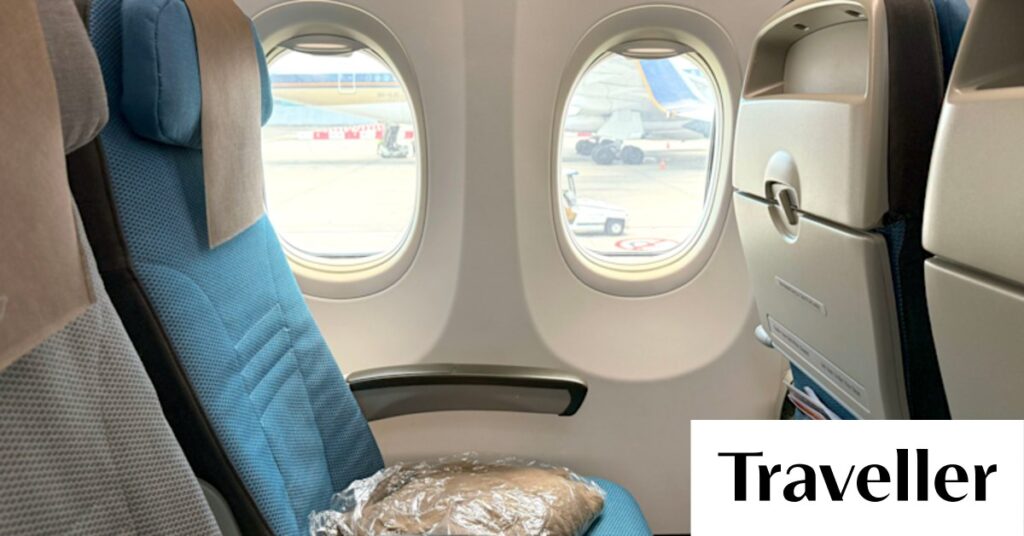
The Boeing 737-800, a relic from the former regional carrier Silk Air, stands out in Singapore Airlines’ fleet for its limited legroom and absence of modern amenities. Despite these shortcomings, the airline’s renowned service remains a highlight for passengers. The aircraft, arranged in a 3-3 seating configuration, offers the smallest seats for legroom among Singapore Airlines’ planes, with a seat pitch of just 30 inches. This makes it an outlier in a fleet known for comfort and luxury.
The announcement comes as Singapore Airlines plans to phase out these older models by October, replacing them with the more modern Boeing 737-Max 8. This move is part of the airline’s broader strategy to enhance passenger experience and align with its sustainability goals.
Entertainment and Technology: A Step Back in Time
Unlike other aircraft in the Singapore Airlines fleet, the Boeing 737-800 lacks seat-back entertainment screens. Passengers must rely on their devices to access a limited subset of the KrisWorld Entertainment system. However, the absence of personal screens and Wi-Fi can be a drawback for those accustomed to the airline’s usual offerings. Passengers can plug into one of the 12 audio channels using provided headphones, a throwback to earlier flying experiences.
Under the seat, passengers will find a shared universal power outlet and a USB-A port, accommodating Australian plugs. Yet, the lack of individual outlets can be inconvenient for those needing to charge multiple devices.
Service Excellence: A Consistent Strength
Despite the aircraft’s limitations, the service provided by Singapore Airlines’ crew continues to shine. Attentive and efficient, the crew ensures a pleasant journey for all passengers. For instance, when overhead locker space was reserved for crew use, a friendly staff member swiftly relocated a passenger’s bag to a more convenient spot.
The food service also maintains high standards. Although the spiced chicken in creamy tomato gravy was unavailable by the time the cart reached some passengers, alternatives like the fish arrabbiata pasta and barley salad were well-received. Complimentary wines, beers, and spirits add to the in-flight dining experience, although the lack of a menu card is a notable omission.
Sustainability and Fleet Modernization
Singapore Airlines has committed to achieving net zero carbon emissions by 2050, a goal supported by the introduction of newer, more fuel-efficient aircraft. The Boeing 737-800, however, does not contribute to this sustainability effort, prompting its replacement with the 737-Max 8. The new aircraft will feature entertainment screens and Wi-Fi, aligning with passenger expectations and environmental commitments.
The move represents a significant step in modernizing Singapore Airlines’ fleet, ensuring that all business class seats will lie flat, standardizing comfort across the board. The seat pitch in economy will remain unchanged, but the addition of personal entertainment and connectivity options will enhance the overall travel experience.
Looking Ahead: The Future of Singapore Airlines
By October, Singapore Airlines plans to retire the Boeing 737-800 from its routes to Penang, Kuala Lumpur, and Kathmandu, replacing them with the 737-Max 8 and Boeing 787 Dreamliners. This transition marks a pivotal moment in the airline’s journey towards a more sustainable and passenger-friendly future.
With economy class fares from Sydney or Melbourne starting at approximately $1600 return, travelers can expect a more consistent Singapore Airlines experience on these routes. While the Boeing 737-800 may have served its purpose, the airline’s commitment to service excellence ensures that passengers continue to enjoy a high standard of care.
The verdict? Five hours on the Boeing 737-800 is enough to appreciate the exceptional service, even if the aircraft itself falls short of Singapore Airlines’ usual standards. As the airline moves forward with its fleet modernization, passengers can look forward to a more comfortable and connected journey.





